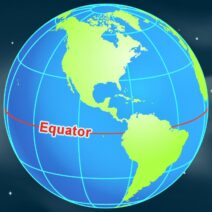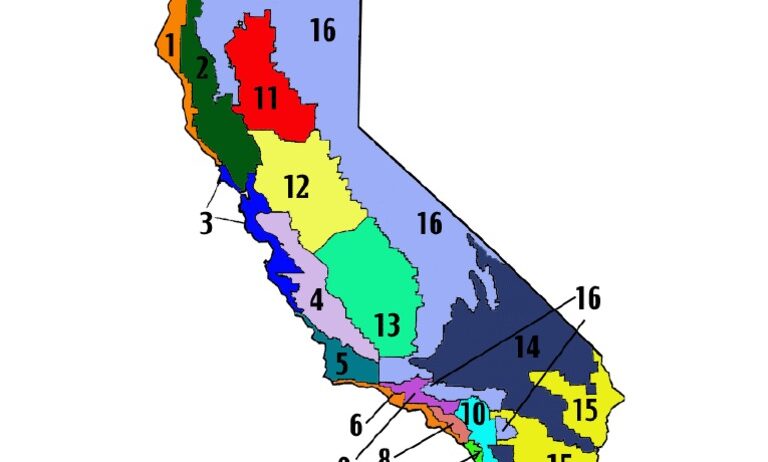California, known for its stunning landscapes and diverse ecosystems, is also recognized for its remarkable climate zones. A question emerges: can you imagine transitioning from a sun-scorched desert to an icy snow-capped peak within a single day? This unique climatic tapestry makes California a fascinating case study for understanding how diverse environmental conditions influence local ecosystems, agriculture, and human habitation.
The state is traditionally divided into several climate zones, classified primarily by the Köppen climate classification system. Each zone possesses distinct characteristics, dictated by geography, elevation, marine influences, and distances from the ocean. Understanding these zones is essential, as they dictate what kinds of vegetation grow, the types of crops that can be cultivated, and even the suitability for residential living.
Let’s embark on an exploration of California’s climate zones, ranging from the arid deserts to the frigid mountains, examining their unique traits and implications for climate change.
1. Mediterranean Climate – The Coastal Charm
Perhaps the most recognized climate in California is the Mediterranean climate, predominantly found along the coastal regions. Characterized by warm, dry summers and mild, wet winters, this climate is ideal for a variety of agriculture, including vineyards and olive groves. Cities like Los Angeles and San Francisco fall in this category, thriving in this unique duality of seasons.
The richness of biodiversity here is staggering. From the iconic coastal redwoods to vibrant wildflowers, the Mediterranean climate fosters a lush environment. However, with increasing temperatures and diminishing rainfall patterns due to climate change, this once stable environment faces existential threats, prompting the question: how can local communities adapt to preserve their natural heritage?
2. Desert Climate – The Parched Expanse
Traveling inland, we encounter the desert climate found in regions such as the Mojave and Colorado Deserts. These areas epitomize aridity, boasting scorching summers and mild winters. The famous Joshua trees are an emblem of this ecosystem, showcasing resilience to extreme conditions.
The challenge of sustaining life in such harsh climates poses intriguing questions for urban planners and policymakers. How do we develop sustainable water management practices to support both human populations and wildlife? Moreover, with climate change intensifying desert conditions, the struggle for resources is expected to escalate, raising concerns about biodiversity and environmental sustainability.
3. Semi-Arid Climate – The Transitional Terrain
Adjacent to the desert regions is California’s semi-arid climate, prevalent in places like the San Joaquin Valley. This zone also experiences significant temperature variations and low rainfall, yet it’s home to vast agricultural operations. Crops such as almonds and grapes thrive here, illustrating the ingenuity of human adaptation to semi-arid conditions.
However, the sustainability of agriculture in this zone is tenuous. As climate change threatens to increase drought frequency, producers are faced with challenges: how do we balance agricultural productivity with ecological integrity? It’s a delicate dance that requires innovative solutions to mitigate compounding environmental pressures.
4. Highland Climate – The Mountainous Vista
As we ascend into the Sierra Nevada, we encounter the highland climate, defined by its sharp elevation gradients and variable weather patterns. At higher elevations, temperatures plummet and precipitation increases, often falling as snow. This climate supports diverse ecosystems and is crucial for California’s water supply.
Interestingly, the interdependence of snowpack and reservoirs underscores the impact of climate change. With rising temperatures leading to earlier snowmelt, water availability becomes a pressing issue, prompting contemplation: can we adapt our water management practices to meet the needs of a changing climate while ensuring ecological stability?
5. Temperate Rainforest Climate – The Serenity of the North
Extending to the northern regions, California’s temperate rainforest climate thrives along the coastal areas like the Humboldt and Del Norte counties. Characterized by heavy rainfall and moderate temperatures year-round, this zone supports immense biodiversity and thriving ecosystems.
The towering redwoods, some of the tallest trees on Earth, are magnificent symbols of this zone. However, with climate change leading to increased storm intensity, we are faced with questions on conservation strategies: how can we protect these ancient giants amid threats from increased flooding and erratic weather patterns?
Conclusion: The Importance of Climate Awareness
Understanding California’s diverse climate zones is not merely an academic exercise; it has real-world implications for agriculture, conservation, and urban planning. Each zone presents unique challenges and opportunities, calling for a collective commitment to sustainable practices. How can we ensure that the resilience of these ecosystems and the communities they support remains intact amid the relentless march of climate change?
Ultimately, the challenge lies not just in understanding the environmental intricacies of California but in taking action. This is not merely about adaptation; it is about stewardship, protecting our natural inheritance for future generations. As climate activists, policymakers, and informed citizens, we must harness knowledge, innovate solutions, and foster collaboration to create a sustainable future—where the beauty of California’s climate diversity continues to thrive.








